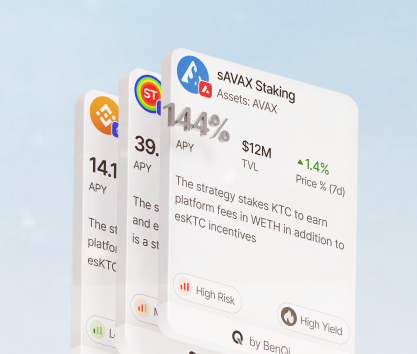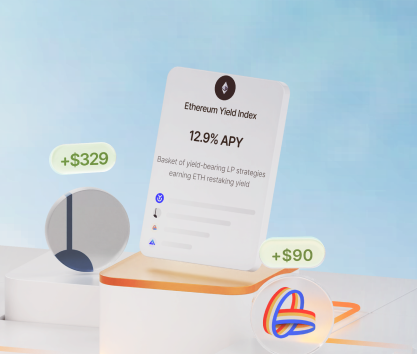Investors with a strong desire to use capital as efficiently as possible often gravitate toward proactive financial products allowing them to increase earnings and influence potential returns instead of relying on fixed rates offered by conservative instruments like bonds and, to a certain degree, staking platforms. Yield Farming requires capital holders to be involved in the money-making process and rewards them for smart decisions.
Crypto farming vs. Staking: what’s the difference?
The volatile nature of the crypto market forces conservative investors interested in novel asset classes to remain very cautious and abstain from trading when conditions become too uncertain. Recognizing this limitation, many DeFi (decentralized finance) platforms started focusing on promoting staking as a good choice for token holders to support blockchains and earn rewards simultaneously.
The shift toward more energy-efficient proof-of-stake consensus protocols is apparent in the current landscape of the crypto industry. PoS is better for the environment and easier for investors without technical know-how to participate in.
Staking and crypto farming vs mining is not even a fair fight. Miners have to pay sizeable chunks of their capital upfront to purchase highly specialized hardware and software that do not have a strong secondary market. Electricity costs also affect returns.
Staking has several advantages:
- Investors receive consistent rewards and can confidently estimate potential returns.
- Staked tokens may experience price appreciation further increasing profits.
- You can often participate in governance by using liquidity pool tokens.
- Market volatility does not affect nominal returns in staked coins.
With APYs ranging from 5% to over 50%, it seems that staking is a perfect choice for anyone. Why does yield farming in cryptocurrency attract so many investors?
First, we need to address some risks associated with staking:
- Price volatility. The outcome of a staking process can be negative even if APYs are incredibly high. If the price of assets drops significantly, you will still lose money.
- You have to lock funds. The vast majority of DeFi protocols require users to lock up tokens for a fixed period. You can’t liquidate a position during such times which is dangerous due to high volatility.
- Slashing. If a node “misbehaves” or does not match the blockchain requirements, some portion of your stake may be slashed as a penalty.
- Potential illiquidity. In certain cases (i.e., missing the unbounding period), tokens may turn illiquid and stay locked up while not generating any profits.
You may build a source of passive income with crypto farming to counteract some of the risks. For example, slashing is less impactful and you don’t have to limit returns to just fixed rates.
What is farming in crypto?
Yield farming is an adventurous approach to investing as it involves taking on debt or locking up funds for prolonged periods to earn much higher returns compared to just staking available tokens. Since many DeFi platforms require liquidity, they are willing to offer competitive rates just to keep investors happy.
How crypto farming works
One of the simplest examples of this investment strategy is the use of borrowed funds to increase a staked position. It is known as leveraged yield farming. You can also borrow funds against a stake by using it as collateral. Most methods involve taking on debt in one form or another. This means that yield farming is inherently risky for inexperienced users.
Despite the dangers of using this investment approach, its popularity keeps growing thanks to several factors:
- Increasing APYs. Average yields have grown by 8.5% year-to-year in 2024. Some DeFi protocols offer incredibly high returns close to 80%.
- Impressive user activity. This particular metric in DeFi has risen by 291% quarter-on-quarter. The number of monthly users is close to 8 million.
- Reliable earnings. According to Upay, the average DeFi revenue per user is over $1.3 thousand which is significantly higher compared to 2023.
Understanding crypto farming
The idea behind hunting high yields is that an investor can effectively double or triple potential earnings by increasing the size of their stake. Searching for the best rate is quite important and investors quickly switch platforms when they see advantageous conditions somewhere else. Since many DeFi protocols allow users to keep their funds liquid via LP tokens, it is quite easy for many experienced capital holders to jump ship whenever they want.
You must be flexible to keep earning more than what you would have if you simply staked tokens directly on layer 1. Seeking opportunities and regularly reassessing your portfolio is a skill that you must perfect to be a successful yield farmer.
Here are tips to learn the basics:
- Don’t forget about DYOR (Do Your Own Research). Putting in time and effort to learn how a DeFi protocol works is quite important. Read whitepapers, technical documentation, and community guides.
- Test strategies before committing. Research by Bancor indicates that over 50% of liquidity providers on Uniswap ultimately lose money in the long run. Do not jump on the bandwagon just because it is popular.
- Avoid excess debt. Start small and use moderate leverage until you feel comfortable with your setup. Paying back interest, covering opportunity costs, and hedging against liquidity risks can be too much for a newcomer.
- Stay focused on a specific strategy. Diversification is great, but you should avoid spreading resources thin before you are happy with all setups and feel that they produce acceptable results.
Crypto farming explained
An average yield farmer is an undergraduate male under 34 years living somewhere in the US or Europe. This image painted by soulless statistics is quite telling. These are adults entering their prime earning years. They are interested in investment opportunities capable of generating life-altering returns.
Users of DeFi protocols have access to a wide range of yield generation including:
- Liquidity provision. Since factual trading volumes in the crypto market are much lower compared to stock exchanges, DEXs need additional liquidity to facilitate faster asset movement. Providers earn money by receiving a portion of trading fees or through the acquisition of LP tokens.
- Lending and borrowing. Platforms like Aave or Compound allow users to quickly lend assets through smart contracts ensuring trustless transactions. Lenders are paid interest by borrowers who might use acquired debt to increase their stakes and use other assets as collateral.
- Staking. Direct staking requires some technical know-how and an active node. Many contemporary retail investors do not have the necessary resources or don’t want to deal with the hassle. Centralized exchanges like Coinbase or Binance alongside automated staking pools allow users to receive rewards without running a node.
How to start farming in crypto
One of the most popular approaches in this field is to farm yields on specialized DeFi protocols that allow users to use LP tokens and stake them to further increase gains. Below is a simple step-by-step instruction.
Note that this particular system has significant vulnerabilities that a newcomer must be aware of:
- High yields are offered as a deal-sweetener by exchanges to attract traders and liquidity providers.
- Infinite minting naturally causes inflation and price depreciation making newer tokens more attractive.
- Retail traders and liquidity providers move from one token to another seeking higher factual returns.
The issue of perpetual inflation is still unsolved. If you want to engage in this investment strategy, you have to remember that switching platforms and monitoring the market have to become habits. This way of generating income is not a laidback experience.
An introduction to crypto farming
Getting started is not too hard even for complete newbies. One thing that you must remember is that some DeFi protocols are compatible with specific software wallets. For example, all Dapps deployed on the Ethereum blockchain allow users to connect through MetaMask.
Here are the steps you need to take to become a real crypto farmer:
- Choose a reliable platform. Alchemy has close to 70 DeFi protocols suitable for yield farming that it deems trustworthy. Picking a good one is a challenge, but it can be done with enough patience.
- Deposit tokens in the pool. Decentralized exchanges use funds from liquidity pools to facilitate trading. They often reward depositors with LP tokens that can also be staked to generate additional returns.
- Stake LP tokens. Yield farms (DeFi protocols have different names for them) produce rewards regularly allowing you to grow your LP holdings and even participate in governance while you have them.
- Reinvest tokens. Compounding is an important part of this investment system. You will be increasing the size of your stake by putting back rewards. Remember that this process only works as long as the token does not lose too much value.
Crypto yield farming basics
A successful investor must acquire some specific knowledge and skills to navigate the world of crypto without any issues.
Here’s what you need to learn:
- How to estimate returns. Yield calculators exist for a reason. It is a good idea to use these apps to have a good understanding of whether profits will cover expenses like interest payments, opportunity costs (impermanent loss), and fees.
- How to monitor the market. Learning technical analysis is a good idea for any investor. You have to keep track of staked tokens used as collateral and the prices of LP tokens that you are accumulating. If these assets depreciate, you will lose money regardless of yield percentage.
- How to work with different DeFi protocols. While contemporary software is designed to be convenient and simple, it still has a learning curve. Learn how to operate crypto wallets, DeFi interfaces, and other digital tools.
Building a source of passive income with crypto farming
Remember that this investment strategy should be included in a portfolio that includes different classes of assets. Ideally, you should have real estate, bonds (fixed return rate investments), stocks, cryptocurrencies, and stakes. Unfortunately, the vast majority of contemporary retail investors do not have the resources to cover so many types of holdings.
The crypto industry allows its participants to diversify within the isolated ecosystem by spreading capital across an assortment of financial instruments including:
- Layer 1 and Layer 2 tokens that can be held for a long time (Bitcoin, Ethereum, Polygon, etc.);
- Perpetual futures used for hedging purposes or as standalone investments;
- Stakes in Proof-of-Stake layer 1 blockchains like Ethereum or Cardano;
- Stakes in liquidity pools, lending protocols, and other yield farming platforms.
We hate to bring the bad news, but it is close to impossible to build a reliable source of passive income using only yield farming. Focus on creating a balanced portfolio that can produce consistent returns instead of relying on a single strategy.
Staking vs. Farming in Crypto
The biggest question a conservative investor must ask themselves is whether engaging in yield farming brings more to the table than simply staking tokens in L1 blockchains. The devil is in the details. Here are reasons to pick the former rather than the latter:
- You want to increase potential returns and have strong risk tolerance;
- Locking up digital assets restricts your other investment activities;
- You have faith in the bright future of the DeFi ecosystem.
Otherwise, it is a much better idea to stick to safer options and hold long market positions on established coins like $BTC, $ETH, $USDT, and others.
Benefits of crypto farming
Before we dive into our list of the best yield farming platforms in 2024, let’s sum up the advantages enjoyed by their investors:
- Higher yields across the board. DEXs and lending platforms offer competitive rates and good rewards to loyal participants. Staking APYs usually range between 2% and 14% depending on the blockchain. For instance, PancakeSwap offers a 400% APY.
- Lower entry barriers. Many newcomers do not have the necessary capital to immediately become stakers on layer 1. Ethereum’s minimum stake is 32ETH which is a huge chunk of change for anyone. DeFi protocols allow investors to start with very little.
- More investment options. Yield farmers can put their capital into a variety of ecosystems. Automated market-making, lending assets to others, staking LP tokens for additional payouts, or entering LBPs (liquidity bootstrapping pools).
- Self-custody is hugely important for millions of crypto enthusiasts. DeFi protocols do not take your tokens away from you and allow users to keep full custody of their coins. Direct interactions between ecosystem participants and trustless/permissionless transactions through smart contracts make it a great choice for someone who does not like middlemen.
We can also mention global reach, 24/7 schedule, and the ability to engage in governance as additional perks.
Making the right choice is the first step toward success. We do not want to sway you toward one option or another. These are platforms that offer competitive rates, reliable infrastructures, and caring customer or community support.
UniSwap
This DeFi protocol is deployed on the Ethereum blockchain and works with all ERC-20 tokens (Ethereum’s native smart contract standard). We have mentioned before that over 50% of Uniswap liquidity providers lose money. The cool part about this statement is that the other half of users don’t. UniSwap offers dynamic rates that can be calculated using services such as APY.vision.
This platform is quite reliable and has been around for a while earning itself a good reputation among crypto enthusiasts. Despite the lack of transparency, it is a good choice for people who are interested in yield farming.
YearnToday
Yearn.Finance is deployed on the Ethereum blockchain and has a massive digital infrastructure. One of its flagship products is yield farming using a variety of instruments including Vaults, Vaults 2.0, Gimme, yETH, and ePRISM among many others.
Unlike many other tokens, $YFI has not lost value since its launch and continues trading at healthy prices to this day. As of the time of writing, the market cap is above $160 million, and daily trading volumes routinely exceed $40 million.
Thanks to the variety of yield farming opportunities, it is one of the best platforms to go if you want to build a diverse portfolio.
Aave
As one of the oldest and most well-developed DeFi protocols with yield farming, Aave is a good choice for investors who want to work across multiple chains as it supports Ethereum, Gnosis, Polygon, Arbitrum, Avalanche, and others. With over $21 billion in TVL and a native token that did not tank as hard as many others, it is a solid choice for newcomers and veterans alike.
Aave does have a learning curve that is steeper compared to other less complicated platforms, but it is a transparent DeFi protocol that offers a good product.
Compound
One of the pioneers of the yield farming industry, Compound is an excellent example of a DeFi protocol that focuses strictly on specific types of operations to enhance lending and borrowing within the crypto industry. $COMP is a token that has versatile utility as it can be staked, lent, or used for governance purposes.
Recently, the development of Compound III was finalized ensuring that the protocol is more secure, reliable, and trustworthy. The $COMP token has succumbed to inflation and lost a significant chunk of its value throughout the years. Nevertheless, it is still an actively traded digital asset with a potential for appreciation if anti-inflationary measures are implemented sometime in the future.
QuickSwap
As Polygon’s leading DEX, QuickSwap has been working hard to build a sustainable ecosystem by introducing some policies to combat inflation. Recently, the $QUICK token was redenominated to a new 1:1000 ratio in an effort to increase the attractiveness of the token to users with unit size bias. As of the time of writing, the old token has a $21 million market cap against the $18 million of the new one.
Polygon itself has not been doing well in 2024. However, the network continues deploying new features and evolving. If you have a strong belief that this blockchain is destined to thrive in the future, investing in QuickSwap is a good idea.
Conclusion
Yield farming gives you many opportunities to build a strong portfolio, but you must be careful when engaging in investment strategies that you don’t fully understand. This article serves an educational purpose and provides a surface-level overview of yield farming, its advantages, and risks. We strongly encourage you to learn more about the subject matter before fully committing to any DeFi protocol offering such investment products.









